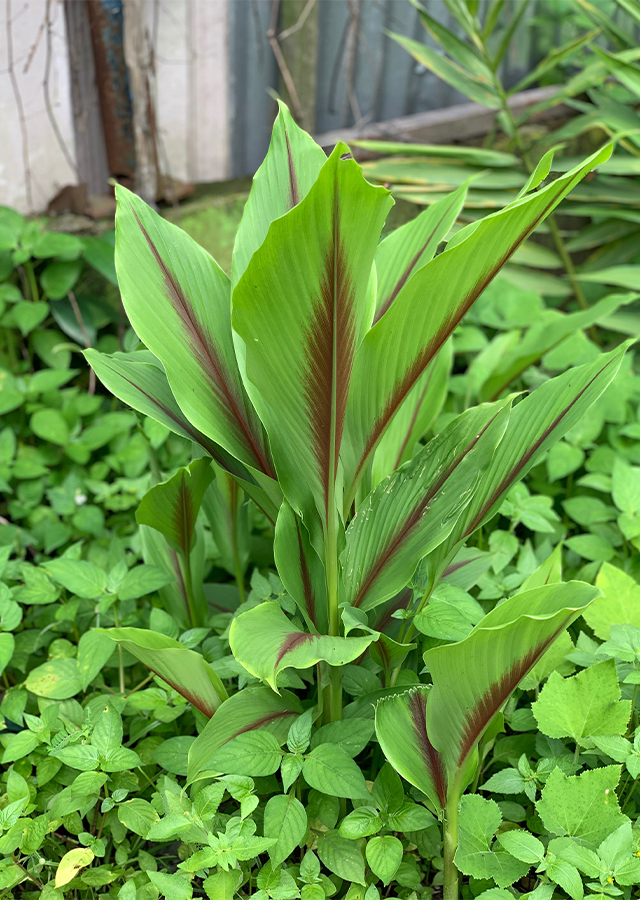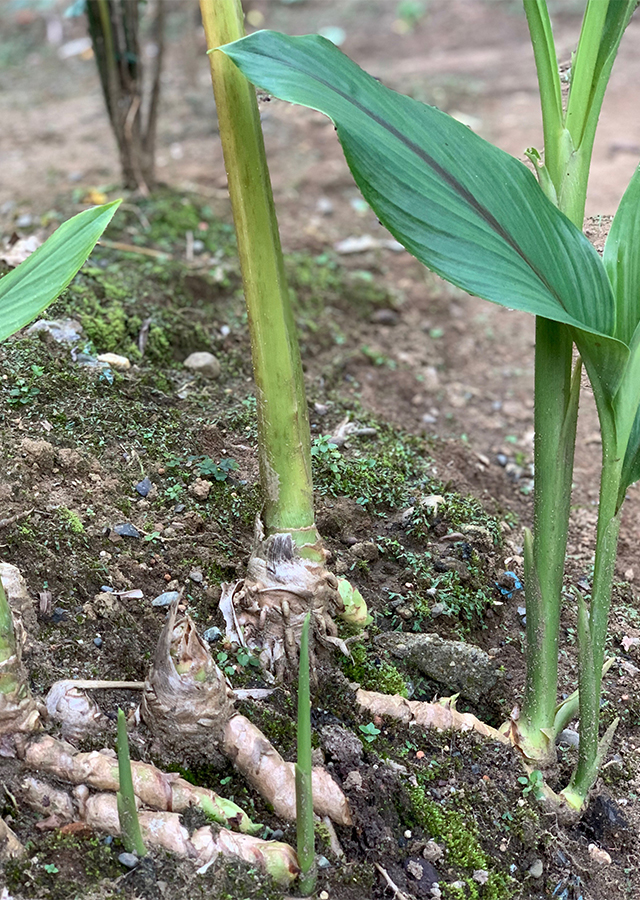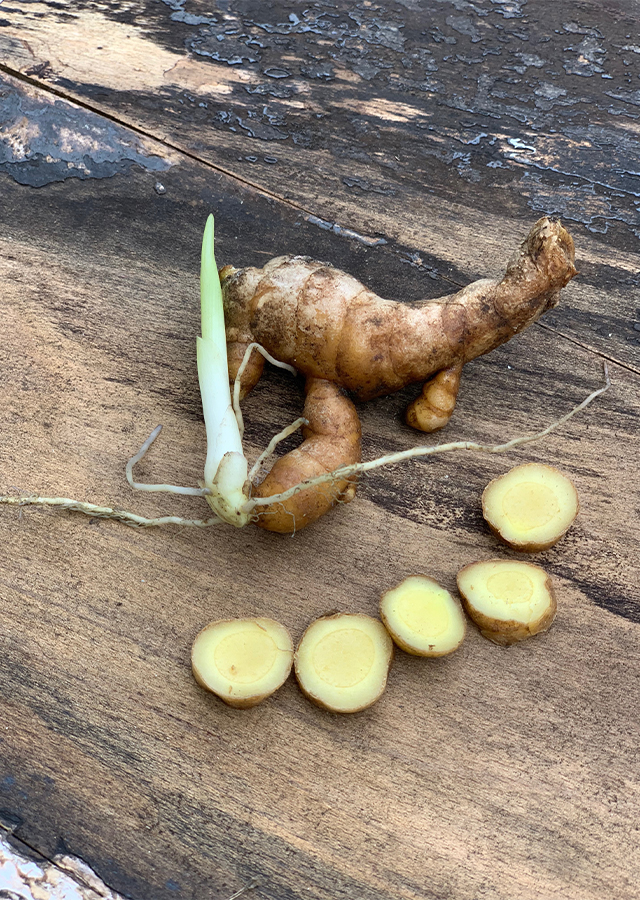White Curcuma
Curcuma aromatica Salisb.
Zingiberaceae
Location in our garden
Principal



Synonym
Curcuma wenyujin Y.H.Chen & C.Ling
Curcuma zedoaria Roxb.
Habitus
Herbaceous. A perennial erect herb about 1–1.5 m with an upright pseudostem.
Part Used
Leaves
Rhizome
Growing Requirements
Need Shade
Habitat
Forest
Overview
The species is native to Assam, Northeast India and South East Asia in the eastern Himalaya. It can be found wild in Vietnam's mountainous areas. It has been introduced elsewhere and has been cultivated in Malaysia, Indonesia, Taiwan,Japan, Madagascar, South China and Brazil. Rhizomes were also common in Europeuntil the Middle Ages and were an item of commerce.
Vernacular Names
Kunchur (Malaysia), Katuri (India), Gajutsu (Japan), E Zhu (China), Gingembre Bâtard (French), Zitwerwurzel (German), Kurkuma Sort (Dutch), Temu putih (Indonesia), Koneng tegal (Sundanese), Alimpuyas (Philippines), Thanuwen (Myanmar), Khamin khun (Thailand). Other common name : Zedoary.
Agroecology
It is a plant from the hot humid, low land tropics, where it grows wild in the lowlands up to 1000 m asl. inits native range. This species is particularly hygrophilous. Best rising in areas where average daytime temperatures range from 22 to 27 °C and a mean annual precipitation of 1,100 to 1,500 mm. Plants in monsoonal forests are adapted to growingin areas of seasonal drought. In a shaded location, it prefers a well-drained soil that also succeeds in full sun and a pH between 5.5 - 6.5.
Morphology
- Root - subterranean, sturdy branched,conical, fleshy rhizome, outside grayish brown to brown and inside pale yellowish white.
- Leaves - Leaf sheaths 35-60 cm long; leaf blades oblong to oblong-lanceolate, 25-75cm x 8-20cm, green with purple band along the midrib.
- Flowers - Inflorescence on separate shoot, bract green or green with a purple margin, coma bracts purple or dark pink. Corolla 3.5-4.5 cm long, yellowish-white. Labellum 2-2.5cm x 1.5-2cm, yellowish-white with a darker yellow median band. Staminodes longitudinally folded, yellowish-white. Anther with long spurs.
- Fruit/Seeds - capsule is ovoid, triangular and dehiscing irregularly with oblong seeds.
Cultivation
- The seed propagates as soon as the seed is ripe.
- At temperatures about 20 ° c, it germinates best.
- Division of the dormant plant rhizomes.
- Around 300 days after planting, rhizomes can be harvested.
Chemical Constituents
Sesquiterpenes, curcumemone, curcumol,curdione, curcuzedoalide.
Traditional Medicinal Uses
- Antioxidant, cancer treatment, Anti mutagenic, Anti inflammatory, Antiallergic,Anti microbial, pain relief, Hepatoprotective, Vasorelaxant/ Vasodilatory/Spasmolytic, slowing down the effects of snake venom, treatment of fever.
- Used for the treatment of flatulent colic, diarrhea and digestive organ weaknessin the Indian medicine system and sometimes used as an ingredient in the bitter tincture of zedoary and anti-periodic tablets. For cutting, cuts, itching and insprains, rhizome paste is applied externally and is used for poulticing. It is used to treat peptic ulcers, including amoebiasis, as a treatment against intestinal infections.
- The rhizome is used in traditional Asian medicine to treat stomach disorders, toothaches, blood stagnation, leucoderma, tuberculosis and spleen enlargement, and to encourage menstruation.
- The rhizome is chewed in Java or its decoction is given as a reinforcingmedication after childbirth.
- The rhizome is used internally in South East Asian traditional medicine topromote digestion and to treat a number of digestive disorders, includingindigestion, nausea, flatulence and bloating.
- It is used to treat cervical cancer in China.
- The rhizome is used to clean and heal ulcers, wounds and other skin disorderswhen applied externally


